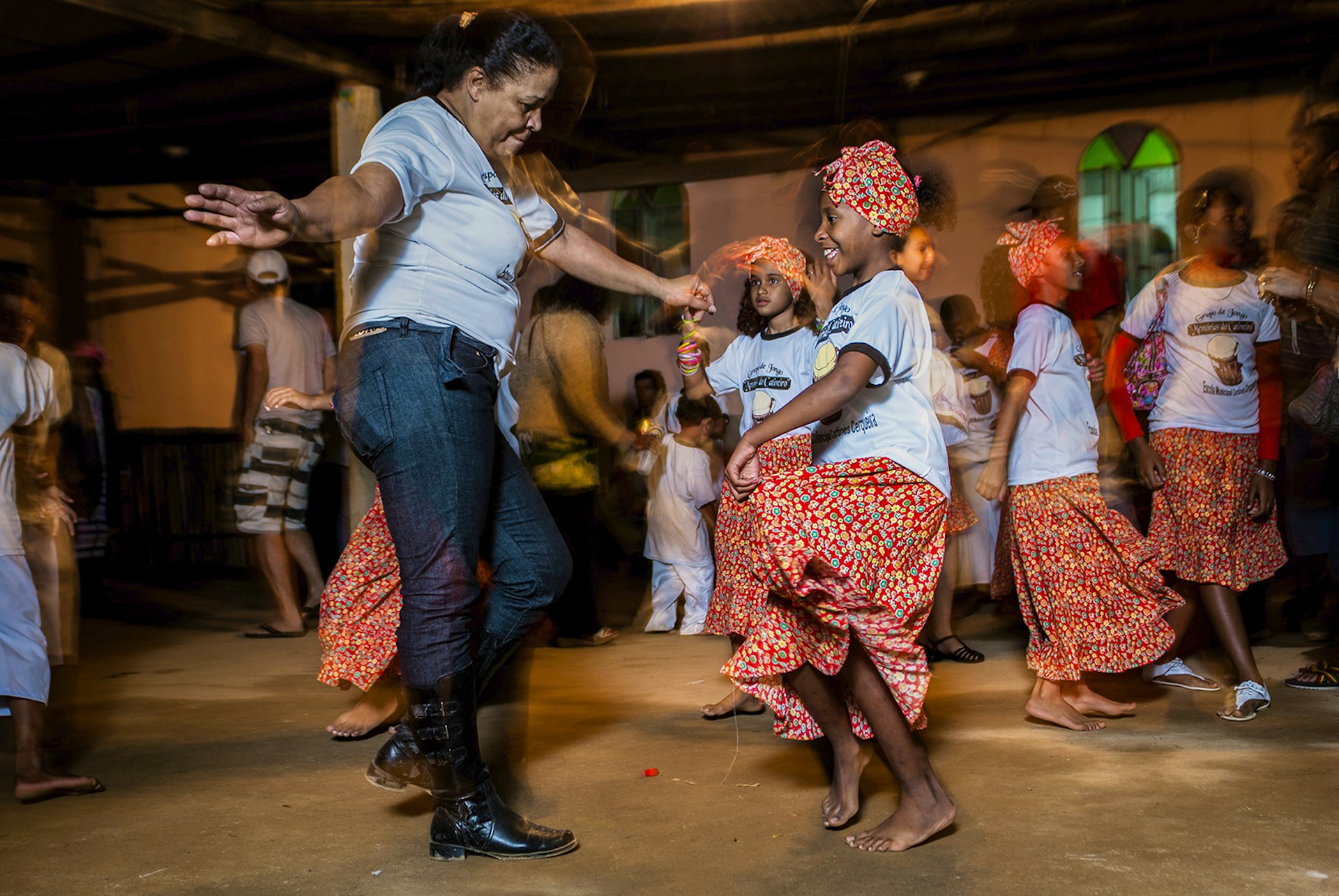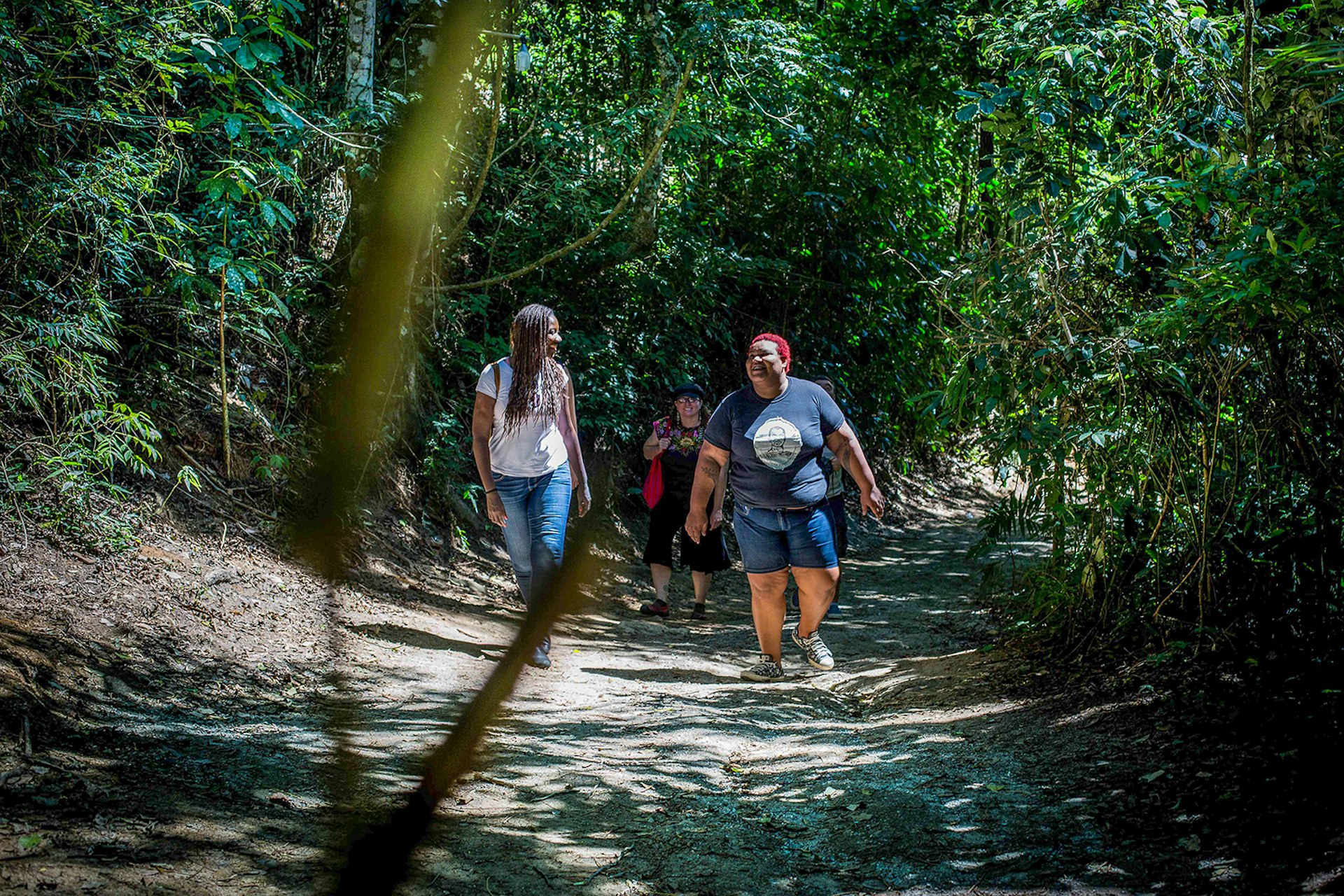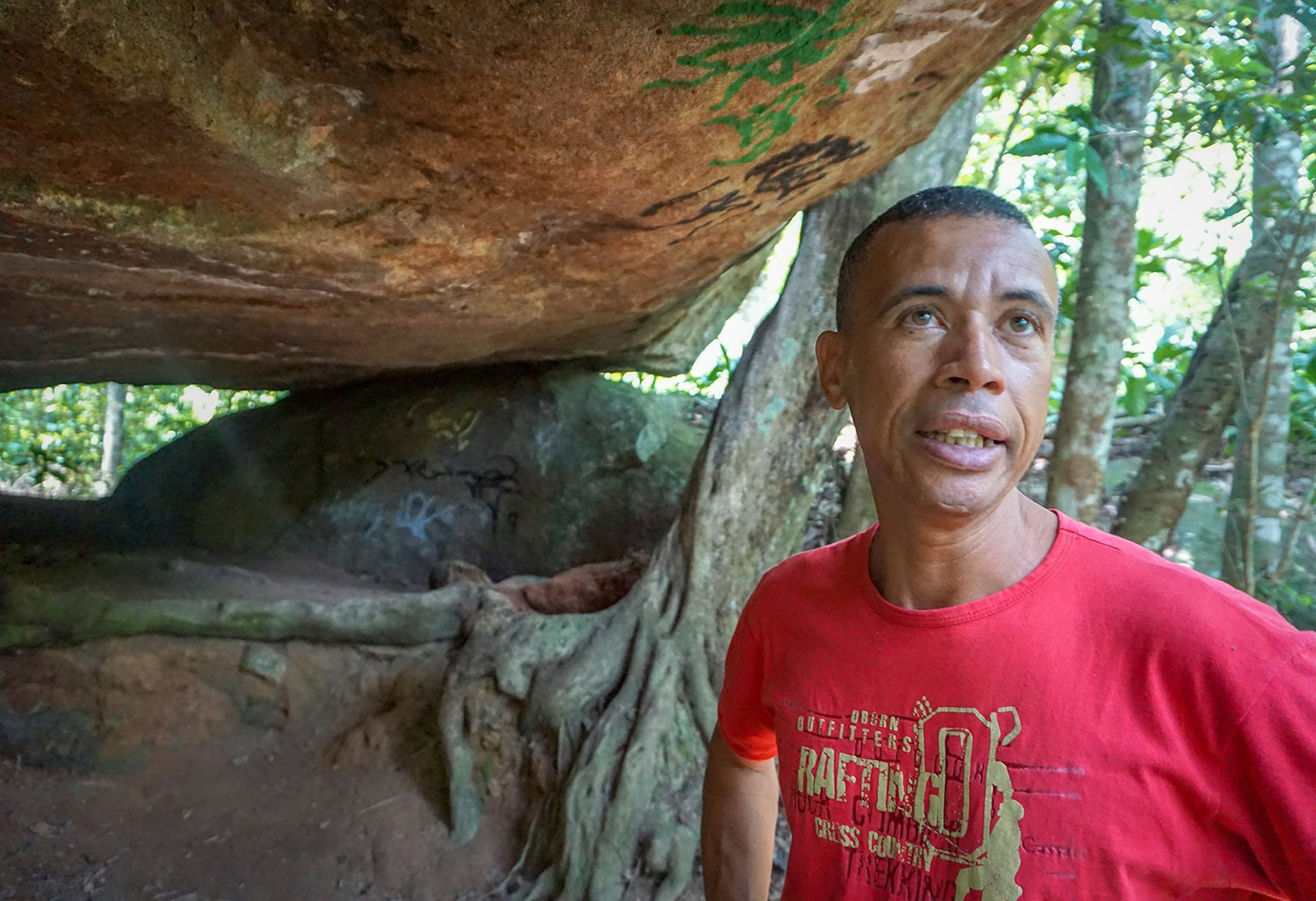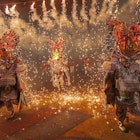Quilombos have existed in Brazil since the country started importing Africans as enslaved labor – back then they were self-sustaining communities of escaped enslaved Africans, often established deep in the forest. Today, the term refers to communities reminiscent of those original quilombos that use their Afro-Brazilian heritage and strong ties to their land as a form of resistance against cultural erasure, environmental destruction and even racism.

The Brazilian government has officially recognized these communities since 1988, and they go through a strenuous process to achieve this designation and gain the title to their land. A quilombo is typically a small community of Afro-Brazilians who have had historically limited contact with urban centers, thereby keeping their heritage as close to its African roots as possible, but urban quilombos also exist and are the most accessible. Community leaders are eager to welcome visitors who have a genuine interest in their history, culture and activism; visits often include hiking, history tours and cultural activities like dancing and singing.
As a note, community members do not speak English, and some communities are located out of the reach of public transportation. But don't let that discourage you – if you don't speak Portuguese, you'll find Google Translate handy, and there are several ways to organize a visit. To establish contact, simply reach out through the quilombo's Facebook page (linked below) or contact Thais Pinheiros of Conectando Territórios, who speaks English and can put together trips and tours. While it might take more effort to pull off than heading to the nearest tourist attraction, visiting a quilombo is a form of sustainable tourism. The communities we list here are all accessible from Rio de Janeiro, too, so take an afternoon and learn about the area's Afro-Brazilian heritage.

Quilombo do Grotão
Quilombo do Grotão is a small community of 15 families located in Serra da Tiririca State Park. These families' ancestors migrated from the northern state of Sergipe shortly after slavery ended in Brazil in 1888. After working in slavery-like conditions for four decades, these ancestors remained on the land once the plantation closed. In 2016, the community received official recognition by Brazil as a quilombo, but since it's located in a state park, it will probably never own its own land.
This new quilombo designation renewed interest in the community, and now it hosts a weekly feijoada (black bean pork stew) and samba party on Sundays from noon until early evening, likely the only samba party located in the middle of a forest in Rio de Janeiro. Thais Pinheiros regularly leads tours of the community during these Sunday events. If visitors want to use public transportation, they can take a bus or ferry from Rio de Janeiro until Niterói, and then catch a taxi or rideshare to the quilombo location in the forest. The community updates its Facebook page with upcoming events and courses, and special visits must be arranged privately. Grotão's main contact is Renato do Grotão (+55 21 96502-8250).

Quilombo Pedra do Sal
Pedra do Sal is Rio's most visited quilombo, but most people don't even know that it has this designation. Tourists know Pedra do Sal as the central location of Rio de Janeiro's largest and most raucous outdoor samba party. Its unique history goes back to the 18th and 19th centuries when it was known as 'Little Africa'. The surrounding port area is where more than 1.5 million captured Africans arrived in Rio de Janeiro after their journey across the Atlantic Ocean. When some enslaved black Brazilians earned enough to free themselves, many moved to this community of free Africans where they practiced their religion, giving birth to some of Brazil’s first African religion centers. Their religious sessions, backed by drums, gave way to the birth of samba. Rio de Janeiro is finally recognizing the area's importance in Afro-Brazilian heritage, and several museums and cultural centers around the area focus on the topic.
Visiting Pedra do Sal is as easy as showing up to the Monday night roda de Samba that lasts until 11 pm. The area is a 10-minute walk from Metro Uruguaiana. The party continues through the night, with DJs playing funk music in the streets and bars staying open until the early morning hours. But to understand the history and cultural significance of the area, it's best to take a guided tour. The Afro-Rio Tour tells the stories of Africans by exploring the history of Rio de Janeiro’s streets, and a significant part of it focuses on Pedra do Sal and its surrounding area. The Rio Free Walking Tour offers a tour of the port area that includes museums, the Olympic Boulevard, and of course, Pedra do Sal.

Quilombo do Camorim
Adilson Almeida’s dream is for Camorim, a small community in western Rio de Janeiro, to be fully recognized as a quilombo by Brazil. The original community, which sits one hour west of Copacabana, was formed by enslaved blacks who escaped one of the first plantations in the state of Rio de Janeiro. When slavery was abolished, many of these same people returned to occupy the area of the main house. This is now a designated archaeological site, and researchers continue to unearth artifacts from the 16th and 17th centuries. During the 2016 Olympic and Paralympic Games, a local reporter revealed that Olympic housing for journalists had been built on the site of a cemetery for slaves. The quilombo sits on the edge of a Pedra Branch State Park, one of the largest urban forests in the world.
Almeida works as the park's caretaker, often hosting planting events for both the community and visitors, and offering guided tours to the park's natural lake. Pay close attention to the community's Facebook page, as it hosts events every month; to plan a visit, you can also contact Almeida directly (+55 21 98163-3792). Rio's 613 bus will get you close to the community or a rideshare will take you directly there.

Quilombo São Jose de Serra
The São José de Serra Quilombo, the oldest quilombo in the state of Rio de Janeiro, sits three hours outside of the city in a region that once supplied 75 percent of the world's coffee. On May 13, this quilombo community of 150 people hosts Brazil's largest festival in honor of the Preto Velho. While this is the day Brazil became the last country in the Americas to abolish slavery, the community chooses to celebrate the Umbanda spirit Preto Velho instead, a figure known for his wisdom and resistance to the hardships of slavery. More than 3,000 people arrive at the small community with their tents in hand for 24 hours of feijoada, samba and jongo dancing. The event’s highlight is a massive bonfire set at midnight that burns until the early morning when people start to depart. To organize a trip to the festival, check the community's Facebook two months beforehand. During the rest of the year, most people rent private transportation to drive to the quilombo. You can also reach out to the Estrada Conservatória-Santa Isabel do Rio Preto to plan your visit (quilombosaojosedaserra@gmail.com; +55 24 2457-1130).

Quilombo Bracuí
In the late 1800s, José de Souza Beves owned the Santa Rita do Bracuí sugar plantation; when Beves freed the enslaved blacks in 1879, he also gifted them with the property that they had toiled for years. The resulting community, Bracuí Quilombo, was established and residents lived there in peace until the 1960s, farming the land as a means of survival. But when a highway was built through the beachfront area, and urbanites discovered the natural beauty of Angra dos Reis, the quilombolas found themselves in a legal fight for their inherited land against condominium developers. In the 90s, community members began to self-identify as quilombolas as a mean to preserve their cultural heritage and their land. The community achieved quilombo status in 1999 but it has yet to achieve the official titles to its land.
A one-day visit to this community is the perfect getaway from Rio de Janeiro. Bracuí sits two hours outside of the city and buses drop visitors off on the main road, about a 20-minute walk from the community. Marilda Souza, the community association’s leader, is used to receiving groups of visitors, some as large as 50. The visit starts with a lecture about the community's history, and the visit also includes a nature hike to a nearby waterfall. A stop at Bracuí can also be combined with a longer trip to Ilha Grande. Souza can be contacted via the quilombo's Facebook and Whatsapp (+55 24 3369-3767) to arrange visits. When buying a ticket at the bus station, make sure to catch the bus that stops close to Bracuí in Angra.











